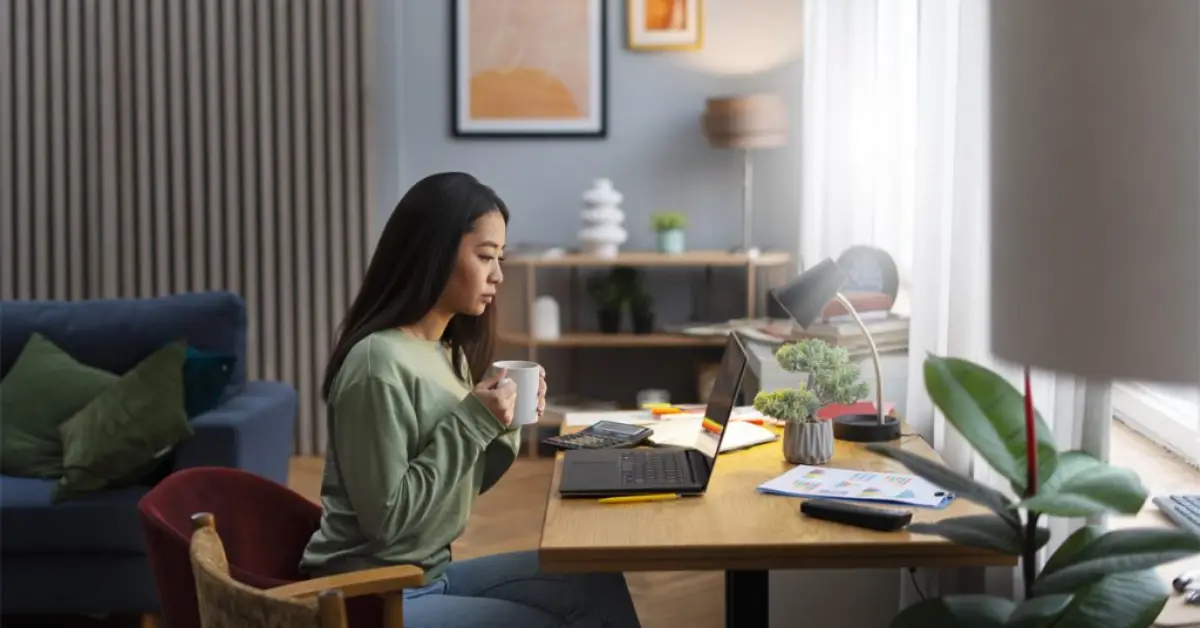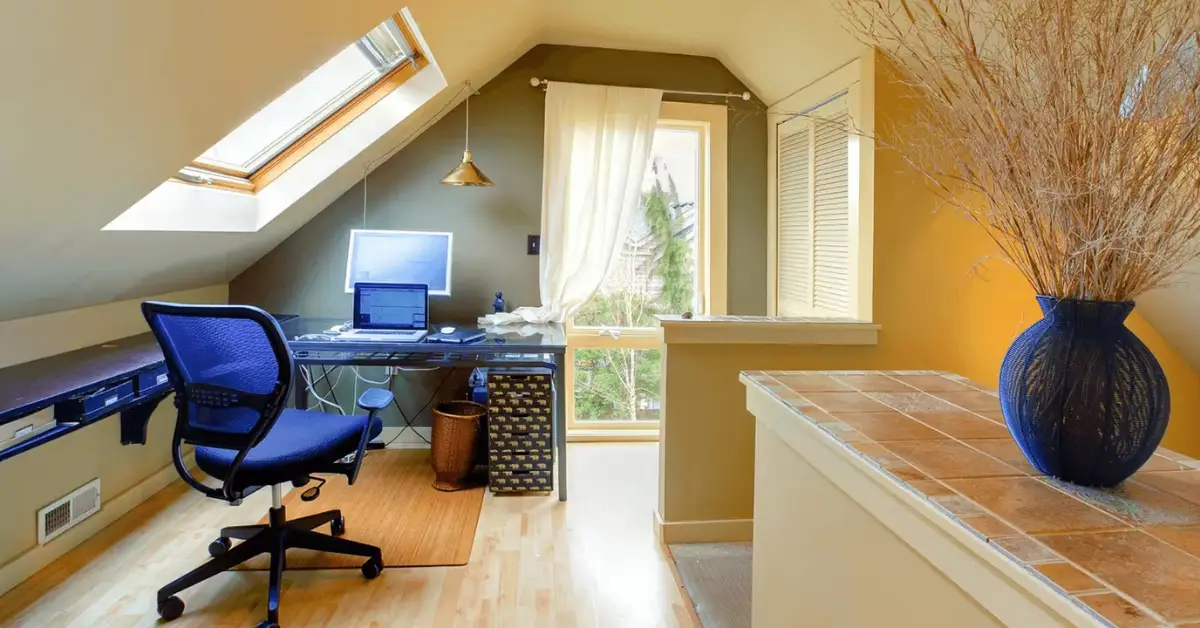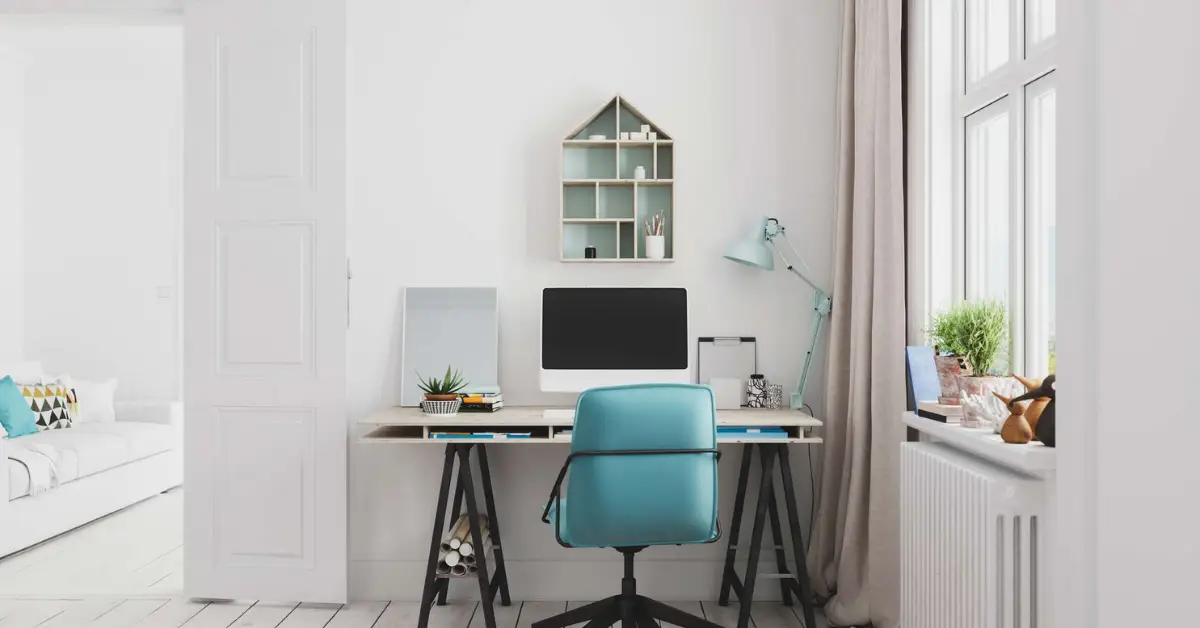10 Privacy Upgrades That’ll Instantly Transform Your Home Workspace
I’ve lost count of how many times I’ve been on a video call, mid-sentence, only for someone to walk past behind me—or worse, the blender starts in the kitchen. Working from home sounded like freedom at first, but it quickly taught me one hard truth: privacy is productivity. When your home office doesn’t feel separate from the rest of your life, your focus never fully shows up either.
I’ve been there—the background noise, the constant interruptions, the feeling that no matter how tidy or tech-filled the setup looks, it’s never your own space. Over time, I learned that making your home office private isn’t about building walls or spending thousands on renovations. It’s about small, intentional changes that make your brain switch into work mode the moment you sit down.
In this guide, I’ll share ten practical, tested ways to make your home office feel genuinely private and peaceful—no matter how big or small your space is. By the end, you’ll know exactly what to adjust so your desk feels less like a corner of the living room and more like the quiet workspace you’ve always needed.
What’s the one thing that distracts you most when you’re working from home?
Why Privacy and Peace Matter When You Work from Home
When I first started working from home, I thought comfort was all I needed—a good chair, a clean desk, and maybe a nice candle. But it didn’t take long to realize that comfort means nothing without privacy. Every interruption, every background sound, every time someone walks into the room, it pulls you out of focus. You lose your rhythm, your thoughts scatter, and suddenly that “quick email” takes 20 minutes to finish.
Privacy isn’t just about keeping people out—it’s about creating a space where your brain knows it’s safe to focus. You don’t have to glance over your shoulder during calls or worry that someone’s listening in. When you feel calm and undisturbed, your ideas flow easier, your work looks sharper, and even your mood improves.
A peaceful home office also signals something bigger: professionalism. Whether you’re in a virtual meeting or working solo, a quiet, contained space shows that you take your work seriously. According to Forbes, workers with designated, distraction-free areas report higher focus and lower stress than those who switch between shared spaces like the kitchen or living room.
If you’ve ever ended a workday more tired from distractions than from actual tasks, it’s time to rethink your setup. Let’s start small—with things you can fix today, even if you don’t have a separate room.
Simple Fixes You Can Try Today (Even on a Budget)

You don’t need a remodel to make your workspace feel private. Start with a few intentional changes that signal “focus mode” to both you and everyone else around you.
1. Choose the quietest corner of your home
- Avoid rooms that share walls with noisy areas like kitchens or living rooms.
- Corners near natural light help with both calmness and productivity.
- If possible, set up near a solid wall—sound carries less than near windows.
2. Use furniture as dividers
- A tall bookcase, folding screen, or even a clothing rack with a curtain can create instant separation.
- Bonus: shelves can double as storage and sound absorbers.
- Try arranging your desk so the divider sits behind you—this also improves video-call backgrounds.
3. Create visual and behavioural “office closed” cues
- Simple habits—closing a door, wearing headphones, or turning on a desk lamp—tell others you’re working.
- Use small “Do Not Disturb” signs during calls; it’s surprisingly effective with kids and roommates.
- End your workday by turning off that same light or removing your headphones—it trains your brain to switch off, too.
4. Declutter to calm your mind
- Keep only essentials within arm’s reach: laptop, notepad, coffee mug, lamp.
- Remove unrelated items that remind you of chores or distractions.
- A clean desk visually separates “work” from “home,” even if they share the same room. And if decluttering feels like a challenge, check out our guide on 10 Must-Remove Items to Make Your Entryway Fall-Ready—it’s a great reminder of how simplifying one space can instantly make the rest of your home feel calmer.
It’s not about having a big house—it’s about making what you already have work smarter for you. Try one of these changes today and see how quickly the energy of your space shifts. If you love quick transformations, you’ll also enjoy exploring these 10 Easy DIY Upgrades to Refresh Your Bedroom in No Time—they follow the same idea of turning small improvements into big comfort.
What’s one small change you could make right now that would help your home office feel more private?
Mid-Tier Upgrades That Transform Your Space
Once you’ve handled the basics, a few smart investments can completely change how your home office feels. You don’t need a full remodel—just targeted upgrades that give you better control over sound, light, and focus. Think of this stage as “comfort meets performance.”
1. Add acoustic curtains, panels, or a door sweep for noise reduction
If outside noise distracts you more than anything else, start here. Acoustic curtains or foam panels absorb sound instead of letting it bounce around. Even a simple rubber door sweep can block hallway chatter or TV noise. I added one in my own home office, and it instantly cut down the hum from the living room.
2. Improve lighting and wall colours for calm and focus
Light changes how your brain behaves. Harsh white bulbs can trigger eye strain and fatigue, while warm tones help you stay calm during long hours. Try a mix of soft white overhead light and a focused desk lamp. If you can, repaint your wall in muted greens or soft beige—colours proven to reduce stress. According to Unika Vaev, thoughtful lighting and acoustics can dramatically boost both focus and emotional balance.
3. Upgrade window treatments or install video-call privacy screens
A good window setup does more than look nice—it manages light, noise, and visibility. Use blackout or layered curtains to control brightness and stop outdoor distractions. For calls, a simple privacy screen or backdrop keeps your background clean and professional, especially if your desk faces the living area.
4. Invest in noise-cancelling headphones or directional microphones
Meetings and client calls are easier when you’re not fighting background noise. Quality noise-cancelling headphones block low-frequency sounds like traffic or conversation. A directional microphone focuses on your voice and filters out the rest. You’ll sound more confident—and it’ll feel like you’re in your own soundproof booth.
Premium Design Overhauls for True Seclusion

If you’ve mastered the basics and want a workspace that feels entirely your own, it’s time to think bigger. These upgrades take more effort and budget but give back long-term peace, privacy, and focus.
1. Convert unused spaces like closets or attics into private offices
That empty walk-in or spare corner in the attic might just be your perfect work zone. Close it off with a sliding door or partition, add soft lighting, and you’ve got instant separation from household activity. It’s amazing how a few walls—even temporary ones—can transform your mental state. If your workspace opens onto a balcony or small outdoor area, you can even turn that spot into a relaxing mini-retreat with these 5 Must-Try Balcony Ideas That Transform Small Spaces into Cozy Corners.
2. Add sound-insulated doors or smart acoustic partitions
If you take regular calls or handle confidential work, sound insulation is worth every dollar. Replace hollow doors with solid-core ones or add smart sliding panels that reduce echo. You can even layer acoustic wallpaper or foam boards behind art pieces—hidden, stylish, and effective.
3. Bring in biophilic design for a peaceful atmosphere
Plants, soft scents, and natural textures do more for focus than most people realize. A small palm or snake plant near your desk adds visual calm and improves air quality. Pair it with subtle ambient sounds—like rainfall or instrumental music—to create a peaceful rhythm throughout your day.
These premium touches don’t just make your office quieter—they make it feel like an extension of you. Once you create that kind of environment, stepping into your workspace won’t feel like “starting work.” It’ll feel like stepping into clarity.
Which one of these upgrades feels most doable for your setup right now?
Privacy & Peace Checklist You Can Follow
By now, you’ve got plenty of ideas—but what really helps is turning those ideas into a plan you can act on. I’ve made a simple checklist you can copy, print, or even tape to your wall. The goal here isn’t perfection—it’s steady improvement. Every small fix adds up to a calmer, more private space where you actually enjoy working.
| Task | Estimated Budget | Time Required | Impact Level |
|---|---|---|---|
| Choose the quietest corner in your home | $0 | 30 minutes | High |
| Add a folding screen or bookshelf divider | $50–$150 | 1–2 hours | High |
| Install acoustic curtains or a door sweep | $100–$250 | Half day | Very High |
| Upgrade lighting and repaint walls | $200–$400 | 1 weekend | Medium |
| Declutter desk and set daily reset routine | $0 | 15 minutes daily | High |
| Add plants or calming décor | $20–$80 | 30 minutes | Medium |
| Set visual “office closed” cues (signs, lamp) | $10–$50 | Instant | Medium |
If you like, turn this list into your weekly habit tracker—tick off one improvement each week, and in two months, your workspace will feel brand-new. According to Homes & Gardens, by adding some cozy lighting ideas, we can reassure the ancient and instinctual part of our brain that we are safe and free from harm.
Common Mistakes and Myths to Avoid
Before you rush into upgrades, it’s worth knowing what not to do. I’ve made these mistakes myself—and fixing them saved both money and sanity.
- Myth: “Closing the door is enough.” A closed door blocks some noise but not all. Sound can leak through gaps, vents, or thin walls. Use acoustic seals or soft materials to absorb echo instead of relying on barriers alone.
- Mistake: “I need a large room for privacy.” You don’t need an entire room—you need control over your environment. Even a corner can become private if it’s organized and clearly marked as your workspace.
- Over-isolation isn’t peace. Going too far—like cutting off all natural light or over-soundproofing—can make your space feel claustrophobic. Privacy should help you focus, not disconnect you completely.
Small, balanced steps always work better than dramatic overhauls. The right setup lets you breathe while staying focused.
Step-by-Step Action Roadmap

Now that you know what works and what doesn’t, here’s how to put it all together without feeling overwhelmed.
Weekend Starter Setup (Under $100)
- Move your desk to the quietest corner.
- Use a lamp or light cue to signal “work mode.”
- Add a small divider or stackable shelf for visual privacy.
Month-End Upgrade Plan ($100–$400)
- Install acoustic curtains or wall panels.
- Refresh paint or lighting for a softer tone.
- Buy a pair of noise-cancelling headphones for calls.
Long-Term Project Ideas ($400+)
- Build a partial wall or sliding door for true separation.
- Upgrade to a solid-core door or soundproof panel.
- Create a dedicated workspace in a closet, attic, or nook.
Measure Your Progress
You’ll know your setup works when:
- You’re interrupted less often.
- You end the day feeling calmer, not drained.
- Your focus improves and your calls sound clearer.
Building a private, peaceful office isn’t a one-time project—it’s a slow transformation that matches how you live and work. The more you adapt it to you, the better it feels every single day.
So, which step are you planning to tackle this weekend?
What to Do Next
If you’ve made it this far, you already have the tools to turn your home office into a space that truly works for you—not just somewhere you “get by.” Start small. Try one quick win today, like moving your desk to a quieter corner or adding a divider behind you. Those little shifts create the biggest difference over time.
And once you start feeling the calm—less noise, fewer interruptions, more focus—you’ll wonder how you ever worked without it.
Now it’s your turn: what’s the first change you’ll make to create a more private, peaceful workspace? Drop your answer in the comments below—I’d love to hear what works for you.
For more practical home-improvement ideas and space-transforming inspiration, visit Build Like New and discover smarter ways to make every part of your home feel better, work better, and look better.
Disclaimer: The tips and suggestions in this article are for general informational purposes only. Results may vary depending on your home layout, materials used, and personal setup. Always follow safety guidelines and consult a qualified professional before making structural or electrical changes to your home.
⭐ Subscribe to Our Newsletter
Subscribe to the publishers newsletter to receive the latest news and updates directly in your inbox


